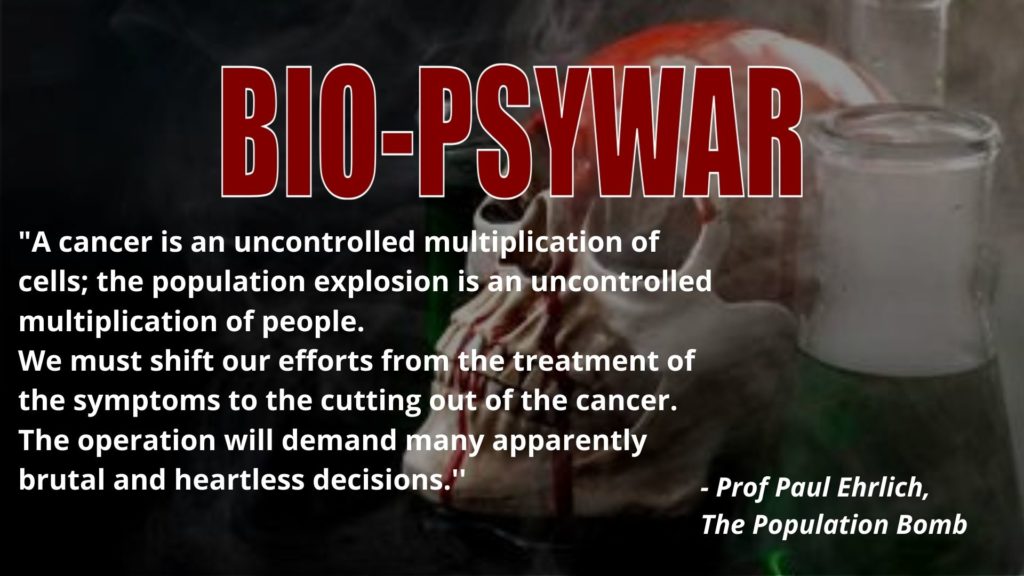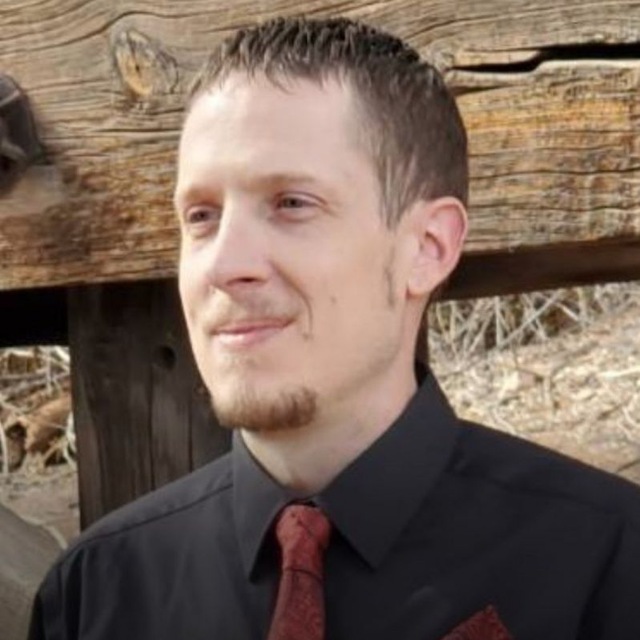Watch Video on: | Bitchute | Odysee | YouTube | Flote | IPFS | Download Video
This post was originally posted on TylerBloyer.com
Welcome to the Bio-PsyWar, "Viral Warfare". This is part 14 in the series.
This episode is a continuation of the recent work I've done on:
- Getting Ready for Human 2.0
- CyberPentagon
- Total PSYOP Awareness
- Bio-PsyWar | Purpose and Scope
- Bio-PsyWar | Commencement of Hostilities
- Bio-PsyWar | Strategic Psychological Operations
- Bio-PsyWar | Double Edged Developments
- Bio-PsyWar | Tick-Tok Bio-Op
- Bio-PsyWar | Tick-Tok Bio-Op P2
- Bio-PsyWar | Aerosolized Innovations
- Bio-PsyWar | Self-Fulfilling Catastrophe
- Bio-PsyWar | Research of a Different Color
- Bio-PsyWar | Message In The Anthrax
- Bio-PsyWar | A Higher Form of Killing
- Bio-PsyWar | The IG Kartell
- Bio-PsyWar | The Bioweapons Mafia
- Bio-PsyWar | Viral Warfare

See Also:
- The Creature of Control Brain from TylerBloyer.com
- Dave Emory: Archives
- FTR #1119 and FTR #1120 DARPA and the Covid-19 Outbreak, Part 1 and DARPA and the Covid-19 Outbreak, Part 2
- FTR #‘s 1135, Lyme Disease and Biological Warfare, Part 1
- FTR #1156 Bio-Psy-Op Apocalypse Now, Part 16: An Ounce of Prevention.
- FTR #‘s 1157, 1158 and 1159–Bio-Psy-Op Apocalypse Now, Parts 17, 18 and 19: An Ounce of Prevention, Parts 2, 3 and 4
- Peter Daszak’s EcoHealth Alliance Has Hidden Almost $40 Million In Pentagon Funding And Militarized Pandemic Science
- The Lancet - Will influenza be the next bioweapon?
- Synthetic biology raises risk of new bioweapons, US report warns
- Synthetic recombinant bat SARS-like coronavirus is infectious in cultured cells and in mice
- US officials revisit rules for disclosing risky disease experiments
- Fort Detrick lab shut down after failed safety inspection; all research halted indefinitely
- US military plan to spread viruses using insects could create ‘new class of biological weapon’, scientists warn
- A Biosecurity Failure -America’s key lab for fighting infectious disease has become a Pentagon backwater.
- Bats, Gene Editing and Bioweapons: Recent DARPA Experiments Raise Concerns Amid Coronavirus Outbreak
- Forget Ebola, Sars and Zika: ticks are the next global health threat
- House of Representatives orders Pentagon to investigate whether ticks were once used as biological weapons
- Double-Edged Innovations: Preventing the Misuse of Emerging Biological/Chemical Technologies
- Project Coast
- The Creature Of Control Podcast – The Crypto Evolution Of EpiEugenics And “Population Control”
- Exchange Between Sen. Rand Paul and Dr Anthony Fauci on Gain of Function
- Rand Paul: Fauci Emails Paint Disturbing Picture of Covid Narrative
- Fauci Email Dump Proves This Was a Manufactured Crisis
- Rand Paul Grills Doctor Fauci
- Anthony Fauci Email Leaks from May of 2021

Below you'll find an excerpt from an article titles "Cancer Warfare" posted in the Spitfirelist.com in January 6th of 1992. Find the full article here.
National Cancer Institute and the Fort Detrick Link
Richard Hatch
Covert Action Information Bulletin Number 39 (Winter 1991–92)
Those who would increase the potency of biological weapons must search for improved methods o f mass production of organisms, factors which will enhance the virulence, ways to prolong the storage life of living agents, ways to improve aerosol stability, and methods of producing variant organisms by recombination or by other means.
- Col. William D. Tagertt, former commander of the Army’s medical unit at Fort Detrick 1
In 1969, President Richard Nixon ordered a halt to offensive biological warfare (BW) research and weapons stockpiling by the United States. The U.S. Army destroyed its toxins, viruses, and bacteria with heat and disinfectants by May 1972; the disposal of the scientific personnel was not so simple. Some of these biowarriors went to the CIA.2 Others quickly found new support from the National Cancer Institute, particularly in its Virus Cancer Program (VCP).3 The NCI funded and supervised some of the same scientists, universities, and contracting corporations—ostensibly for cancer research—which had conducted biological warfare research. Some of these medical research contracts ran simultaneously with the U.S. biological warfare program. When the military work ended, the civilian programs continued to expand on the same critical areas outlined by Colonel Tigertt.
The NCI’s Viral Cancer Program—a highly politicized public relations effort—was launched in 1971 with great fanfare as part of Nixon’s War on Cancer. The stated aim of the program was to organize experiments aimed at finding cancer-causing viruses.
https://spitfirelist.com/news/cancer-warfare/
Below you'll find an excerpt from the book, Operation Paperclip by Annie Jacobson on page 292.
It had been a year and a half since the Merck Report on the biological weapons threat had been released, and an influx of congressional funding had transformed Camp Detrick into a state-of-the-art bioweapons research and development facility. The army purchased 545 acres of land adjacent to what had been called “Area A” and created a new area, designated “Area B,” where some of Detrick’s first postwar field tests with crop dusters and spray hoses would occur. During the war, dangerous pathogens like anthrax and “X” had been tested and cultured inside Detrick’s germ lab, a rudimentary wooden building covered in black tarpaper and nicknamed the Black Maria by scientists. During the war, an industrial-size boiler, used for fermenting, sat on the lawn outside the germ lab. Now, given the scope of work planned for the immediate future, Detrick needed an aerosol chamber that was bigger and better than anything else like it in the world. The job of designing such a structure was assigned to a bacteriologist named Dr. Harold Batchelor.
Detrick’s British counterparts, at Porton Down, had an excellent chamber of their own, but it fit only two or three mice. What Batchelor came up with was a monstrous spherical one-million-liter chamber called the Eight Ball, shaped like a giant’s golf ball and held upright by iron “legs.” The Chicago Bridge and Iron Works was commissioned to build the Eight Ball to specifications that made it airtight and bombproof. The Eight Ball was to have portholes, doors, and hatchways and steel walls of one and a half inches.
Inside the Eight Ball, airflow would simulate weather systems, with scientists on the outside controlling temperatures on the inside within a range of 55 to 90 degrees Fahrenheit. Humidity could be controlled inside the Eight Ball to fluctuate between 30 and 100 percent. This state-of-the-art environmental control would allow Detrick’s scientists to understand how aerosolized biological agents would work at different altitudes in the open air. The sphere would weigh more than 131 tons and would stand four stories tall. A catwalk around its center would allow scientists to observe, through portholes, the test subjects sitting inside as they were exposed to the world’s deadliest germs. The Chicago Bridge and Iron Works agreed to a delivery date of 1949.
With the chamber’s design complete, Dr. Batchelor prepared to travel to Germany. There was an important German scientist who was just now becoming available for an interview. This was a man who knew more than almost anyone else in the world about biological weapons. He was particularly knowledgeable about weaponized bubonic plague.
The physician was Dr. Kurt Blome, the former deputy surgeon general of the Third Reich. He had just been acquitted of war crimes at the Nuremberg doctors’ trial. Now he was back on the Paperclip list.
The doctors’ trial had been over for forty-two days. It was October 2, 1947, and a message from Heidelberg, marked “Secret-Confidential,” arrived on the desk of the chief of the Chemical Corps. It read: “Available now for interrogation on biological warfare matters is Doctor Kurt Blome.”
A meeting was arranged for November 10, 1947, between Blome and Batchelor. Present alongside Dr. Batchelor were Detrick doctors Dr. Charles R. Phillips, a specialist in desterilization, Dr. Donald W. Falconer, an explosives expert, and Dr. A. W. Gorelick, a dosage expert. Lieutenant R. W. Swanson represented the U.S. Navy and Lieutenant Colonel Warren S. LeRoy represented the army’s European Command Headquarters. An interpreter and a stenographer were also present. Dr. Blome was told in advance that everything discussed would be classified.
Dr. Batchelor spoke first, setting the tone for the all-day affair. “We have come to interview Dr. Blome personally as well as professionally,” Batchelor said. “We have friends in Germany, scientific friends, and this is an opportunity for us to enjoy meeting [Dr. Blome] and to discuss our various problems with him.” To begin, Batchelor asked, “Would it be possible for Dr. Blome to give us an overall picture of the information that he has? The nature of the world under discussion?”
Blome spoke in English, pausing on occasion for the interpreter to help him with a word. “In 1943 I received orders from Goering for all the research of Biological Warfare,” Blome explained, “all the research for BW [would fall] under the name Kanserreseach.… Cancer Research had already started long before that, and I was already working all the time but in order to keep this development secret [the Reich] disguised it.”
https://www.amazon.com/Operation-Paperclip-Intelligence-Program-Scientists/dp/0316221031
Resources:
- LISTEN by Jordan Page
- DR Fauci's Opening Statement To Congress 2012 On The Risk Of Dual Research (Gain of Function)
- Exchange Between Sen. Rand Paul and Dr Anthony Fauci on Gain of Function
- BREAKING: Bombshell Revelations In Fauci's Emails!
- The Age of Genetically Modified Humans Has Arrived
- Ecoscience: Population, Resources, Environment - by Paul R. Ehrlich, John P. Holdren, Anne H. Ehrlich
- Paul R. Ehrlich
- John P. Holdren
- Operation Paperclip - Annie Jacobson
- Rand Paul: Fauci Emails Paint Disturbing Picture of Covid Narrative
- Fauci Email Dump Proves This Was a Manufactured Crisis
- Rand Paul Grills Doctor Fauci
- Plague of Corruption
- The Virus and the Vaccine
- Cancer Warfare - Dave Emory | Spirtfirelist.com
- Coronavirus: Dr. Andrew Kaufman and the Exosomes
- Dr. Andrew Kaufman’s Viral Disinformation
- The Psychiatrist Who Calmly Denies Reality
- Special Event Roundtable With Dr. Andrew Kaufman Vs. Dr. Judy Mikovits
- Gates Divorce, Lockdown Commie, Bitcoin Salary – New World Next Week


